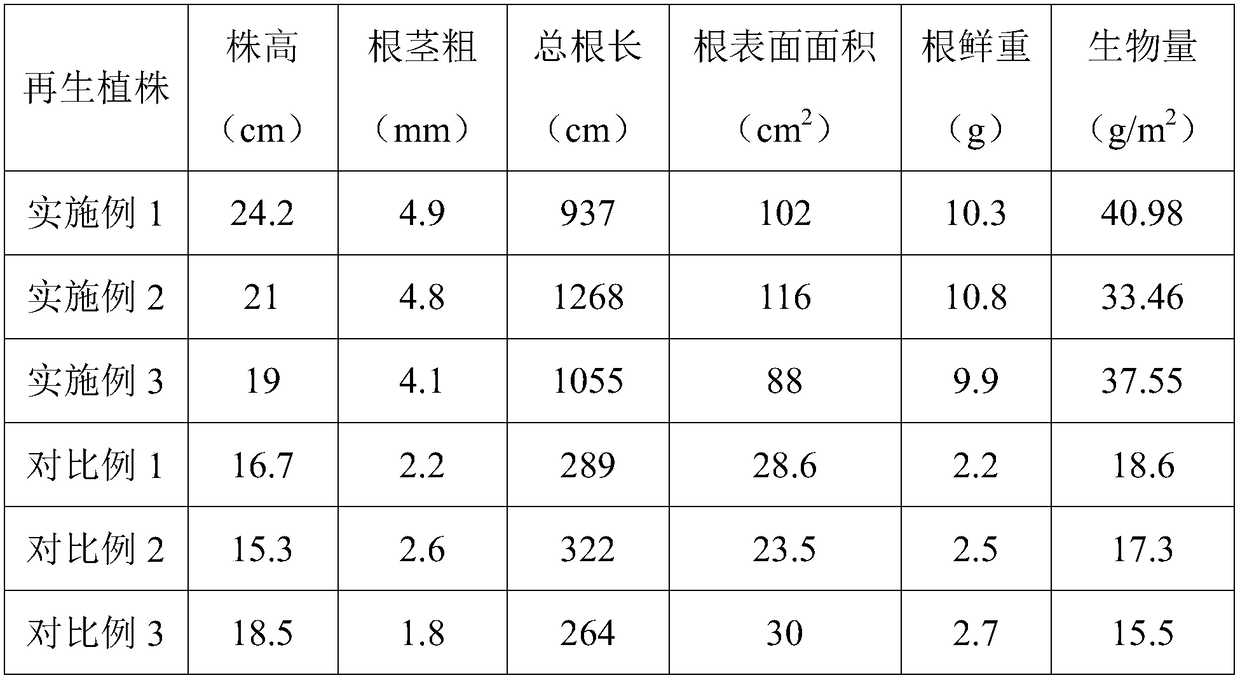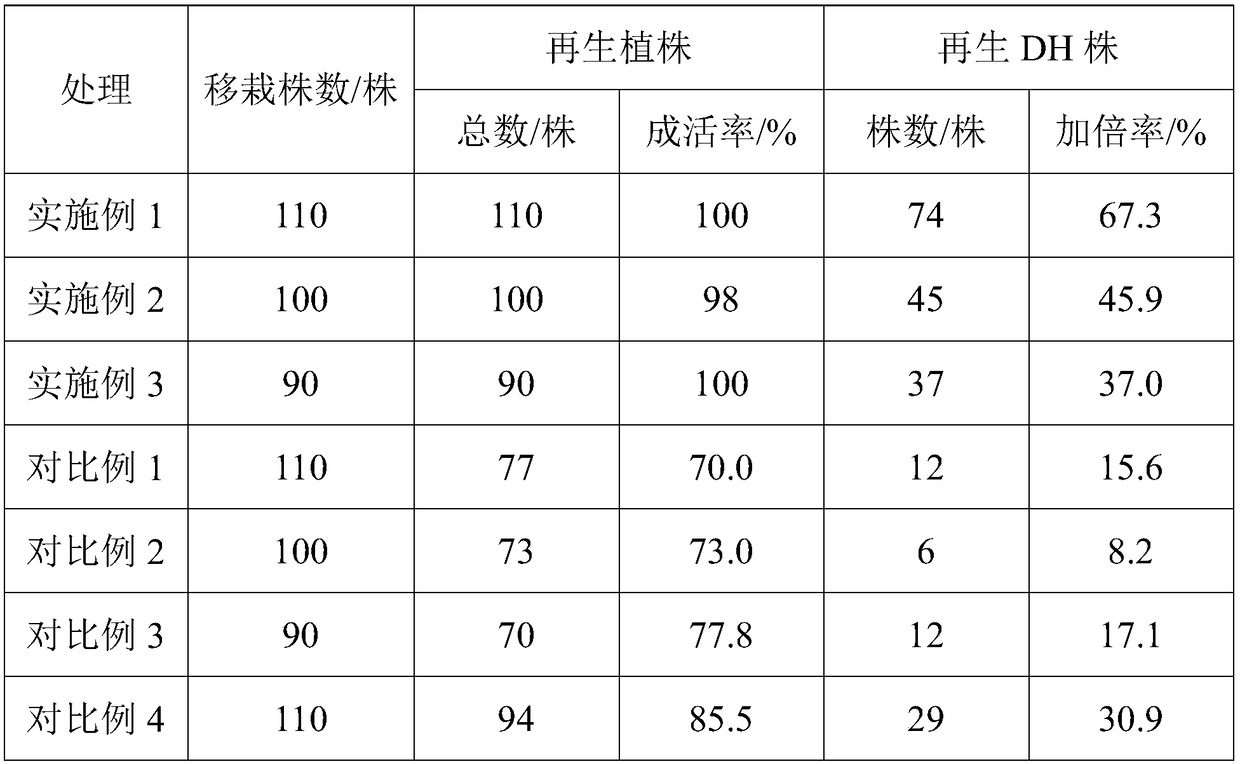Culture method of rape isolated microspore regenerated plants
A culture method and plant regeneration technology, applied in the field of plant tissue culture, can solve the problems of huge workload, unfavorable plant growth, and easy damage to the root system, such as digging seedlings, root washing, and transplanting, etc. Survival rate, no root damage effect
- Summary
- Abstract
- Description
- Claims
- Application Information
AI Technical Summary
Problems solved by technology
Method used
Image
Examples
Embodiment 1
[0025] The present embodiment 1 provides a kind of cultivation method of rape isolated microspore regenerated plant, comprises the steps:
[0026] (1) Preparation of isolated microspores
[0027] At the initial flowering stage of rapeseed (3-7 days after flowering), a robust plant is selected from the field as a donor plant, and flower buds of 2.5-3.5 mm are taken from the main inflorescence or a branch inflorescence for subsequent use. The development period of the flower buds may be slightly different. You can peel off the flower buds and pick microspores for microscopic examination to determine the development period. The best period is late uninucleate to early binucleate. The bud surface was sterilized with 0.2wt% sodium hypochlorite solution for 15 minutes, and then rinsed with sterile water for 3 times. Put the sterilized flower buds in a 50mL centrifuge tube, add 5mL of 13wt% sucrose solution, grind the flower buds with a sterilized glass rod, press out the pollen mic...
Embodiment 2
[0040] The present embodiment 2 provides a kind of cultivation method of rape isolated microspore regenerated plant, comprises the steps:
[0041] (1) Preparation of isolated microspores
[0042] At the initial flowering stage of rapeseed (3-7 days after flowering), a robust plant is selected from the field as a donor plant, and flower buds of 2.5-3.5 mm are taken from the main inflorescence or a branch inflorescence for subsequent use. The development period of the flower buds may be slightly different. You can peel off the flower buds and pick microspores for microscopic examination to determine the development period. The best period is late uninucleate to early binucleate. The bud surface was sterilized with 0.2wt% sodium hypochlorite solution for 15 minutes, and then rinsed with sterile water for 3 times. Put the sterilized flower buds in a 50mL centrifuge tube, add 5mL of 15wt% sucrose solution, grind the flower buds with a sterilized glass rod, press out the pollen mic...
Embodiment 3
[0055] The present embodiment 3 provides a kind of cultivation method of rape isolated microspore regenerated plant, comprises the steps:
[0056] (1) Preparation of isolated microspores
[0057] At the initial flowering stage of rapeseed (3-7 days after flowering), a robust plant is selected from the field as a donor plant, and flower buds of 2.5-3.5 mm are taken from the main inflorescence or a branch inflorescence for subsequent use. The development period of the flower buds may be slightly different. You can peel off the flower buds and pick microspores for microscopic examination to determine the development period. The best period is late uninucleate to early binucleate. The bud surface was sterilized with 0.2wt% sodium hypochlorite solution for 15 minutes, and then rinsed with sterile water for 3 times. Put the sterilized flower buds in a 50mL centrifuge tube, add 5mL of 15wt% sucrose solution, grind the flower buds with a sterilized glass rod, press out the pollen mic...
PUM
 Login to View More
Login to View More Abstract
Description
Claims
Application Information
 Login to View More
Login to View More - R&D
- Intellectual Property
- Life Sciences
- Materials
- Tech Scout
- Unparalleled Data Quality
- Higher Quality Content
- 60% Fewer Hallucinations
Browse by: Latest US Patents, China's latest patents, Technical Efficacy Thesaurus, Application Domain, Technology Topic, Popular Technical Reports.
© 2025 PatSnap. All rights reserved.Legal|Privacy policy|Modern Slavery Act Transparency Statement|Sitemap|About US| Contact US: help@patsnap.com


